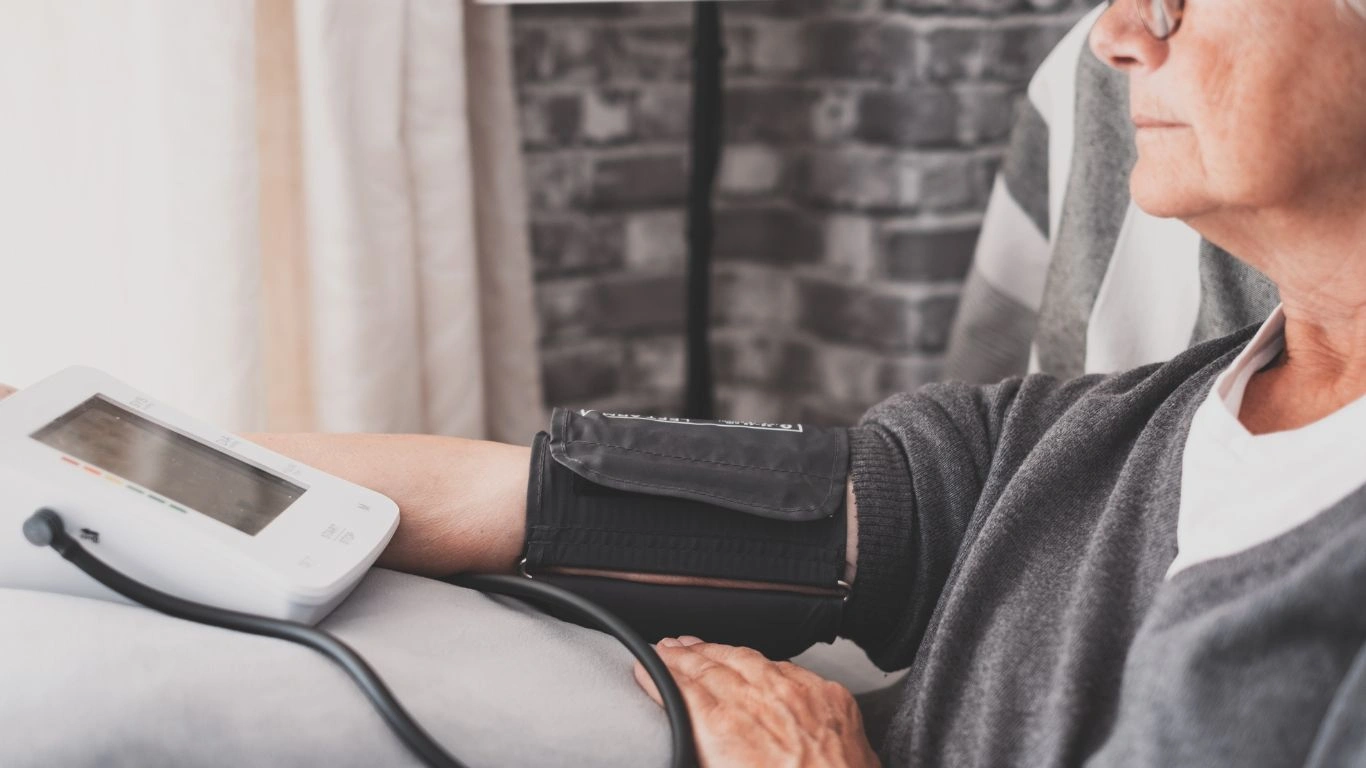Understanding Blood Pressure Changes with Age: What You Need to Know
Blood pressure changes with age, but how does it evolve throughout your life? In this guide, we’ll break down how blood pressure varies as you get older, the factors that influence these changes, and what you can do to maintain healthy levels.
As we age, our bodies go through a variety of changes, and blood pressure is no exception. Whether you’re in your 30s or 70s, it’s important to understand how blood pressure shifts over time and what that means for your health. Let’s dive into the details of how blood pressure changes with age and what you can do about it.

How Blood Pressure Changes with Age
Blood pressure is a measure of the force that blood exerts against the walls of your arteries as your heart pumps it around the body. It’s typically measured using two numbers: systolic (the pressure when your heart beats) and diastolic (the pressure when your heart rests between beats).
As you age, blood pressure tends to rise due to a combination of factors like changes in blood vessels and lifestyle. Here’s a breakdown of what happens:
1. Systolic Blood Pressure Increases
Systolic blood pressure naturally increases with age. As the walls of your arteries lose their elasticity and become stiffer over time, your heart has to work harder to pump blood, causing a rise in systolic pressure. This is especially true for those over 50, where high systolic blood pressure (a condition called isolated systolic hypertension) becomes more common.
2. Diastolic Blood Pressure Levels Off or Decreases
On the other hand, diastolic blood pressure typically levels off or even decreases after the age of 55. This is because arteries become stiffer and less able to expand when the heart rests between beats, which leads to lower diastolic pressure. For older adults, high diastolic pressure is less common than high systolic pressure.
3. Hypertension Risk Increases
With aging, the risk of developing hypertension (high blood pressure) increases. In fact, nearly half of adults over the age of 60 have high blood pressure. Hypertension is a serious condition because it can damage your heart, kidneys, and other organs if left untreated. This is why regular monitoring is crucial, especially as you get older.

Why Does Blood Pressure Change with Age?
Several factors contribute to the changes in blood pressure that come with age. These include:
1. Artery Stiffness
As we age, the elastic fibers in our arteries begin to break down, causing the blood vessels to stiffen. This makes it harder for blood to flow freely, which increases blood pressure.
2. Decreased Kidney Function
The kidneys play a key role in regulating blood pressure. As we get older, kidney function may decline, and this can lead to an increase in blood pressure. Impaired kidney function can also make it harder for your body to balance sodium and water, which affects your blood pressure levels.
3. Hormonal Changes
Hormonal changes, such as those that occur during menopause in women, can also affect blood pressure. The decrease in estrogen levels may cause blood vessels to constrict, leading to higher blood pressure.
4. Weight Gain and Lack of Physical Activity
Weight gain and a sedentary lifestyle can increase the risk of developing high blood pressure. As we age, our metabolism slows down, and we tend to gain weight more easily. This extra weight can put additional strain on the heart and raise blood pressure.

What Are the Blood Pressure Guidelines for Different Age Groups?
Knowing what blood pressure readings are considered normal at different stages of life can help you understand where you stand. According to the American Heart Association (AHA), the following are the general guidelines:
1. Age 18-39
For young adults, normal blood pressure is typically around 120/80 mm Hg. Anything higher is considered elevated, and consistent readings above 130/80 mm Hg are classified as hypertension.
2. Age 40-59
By middle age, blood pressure tends to rise gradually. For this age group, a reading of 130/80 mm Hg or higher may signal early stages of hypertension. Monitoring becomes more important to catch early signs of heart disease.
3. Age 60 and Older
For older adults, systolic blood pressure often rises, and many people in this age group experience readings above 140/90 mm Hg. However, isolated systolic hypertension (high systolic pressure with normal diastolic pressure) is common. Managing this is essential to reduce the risk of heart disease and stroke.

Managing Blood Pressure as You Age
While blood pressure naturally rises with age, there are several steps you can take to manage it and reduce the risk of hypertension.
1. Maintain a Healthy Weight
Keeping your weight in check is one of the most effective ways to manage blood pressure. Even a small amount of weight loss can make a big difference in lowering blood pressure.
2. Stay Active
Regular exercise is key to maintaining healthy blood pressure. Aiming for at least 30 minutes of moderate activity most days of the week can help prevent high blood pressure.
3. Eat a Balanced Diet
A diet rich in fruits, vegetables, whole grains, and lean proteins can help keep blood pressure in check. The DASH (Dietary Approaches to Stop Hypertension) diet is specifically designed to reduce high blood pressure.
4. Limit Salt Intake
Consuming too much salt can raise blood pressure, so it’s important to limit your sodium intake. The American Heart Association recommends no more than 2,300 mg of sodium per day (about one teaspoon of salt).
5. Monitor Blood Pressure Regularly
Regular monitoring is essential to catch any changes early. You can check your blood pressure at home or schedule regular check-ups with your doctor to stay on top of your health.
Conclusion
Blood pressure changes with age, but by understanding how it evolves, you can take proactive steps to maintain healthy levels. By staying active, eating a balanced diet, and monitoring your blood pressure regularly, you can help manage your heart health as you age. It’s never too late to start making positive changes!
Appendices
References
- American Heart Association. (2023). Blood Pressure and Aging: What You Need to Know. Read Article
- National Institutes of Health (NIH). (2024). Blood Pressure Guidelines and Monitoring. Read Article
- American College of Cardiology. (2022). Hypertension and Aging: A Clinical Overview. Read Article
FAQs
- Why does blood pressure increase with age? As we age, our arteries become stiffer and less elastic, which can raise blood pressure. Lifestyle factors like weight gain and inactivity can also contribute.
- What’s considered normal blood pressure for older adults? Normal blood pressure for older adults is typically less than 140/90 mm Hg. However, many people in this age group experience isolated systolic hypertension.
- Isolated systolic hypertension—what is it? Isolated systolic hypertension occurs when the systolic blood pressure is elevated, but the diastolic remains normal. It’s more common in older adults.
- When should I see a doctor about my blood pressure? If your blood pressure consistently reads 130/80 mm Hg or higher, it’s important to consult a healthcare provider for evaluation and treatment.
Disclaimer: The information provided in this article is for educational purposes only and should not replace professional medical advice. Always consult a healthcare professional for personalized guidance and recommendations regarding your blood pressure and overall health.

Dr. Gwenna Aazee is a board-certified Internal Medicine Physician with a special focus on hypertension management, chronic disease prevention, and patient education. With years of experience in both clinical practice and medical writing, she’s passionate about turning evidence-based medicine into accessible, actionable advice. Through her work at Healthusias.com, Dr. Aazee empowers readers to take charge of their health with confidence and clarity. Off the clock, she enjoys deep dives into nutrition research, long walks with her rescue pup, and simplifying medical jargon one article at a time.





